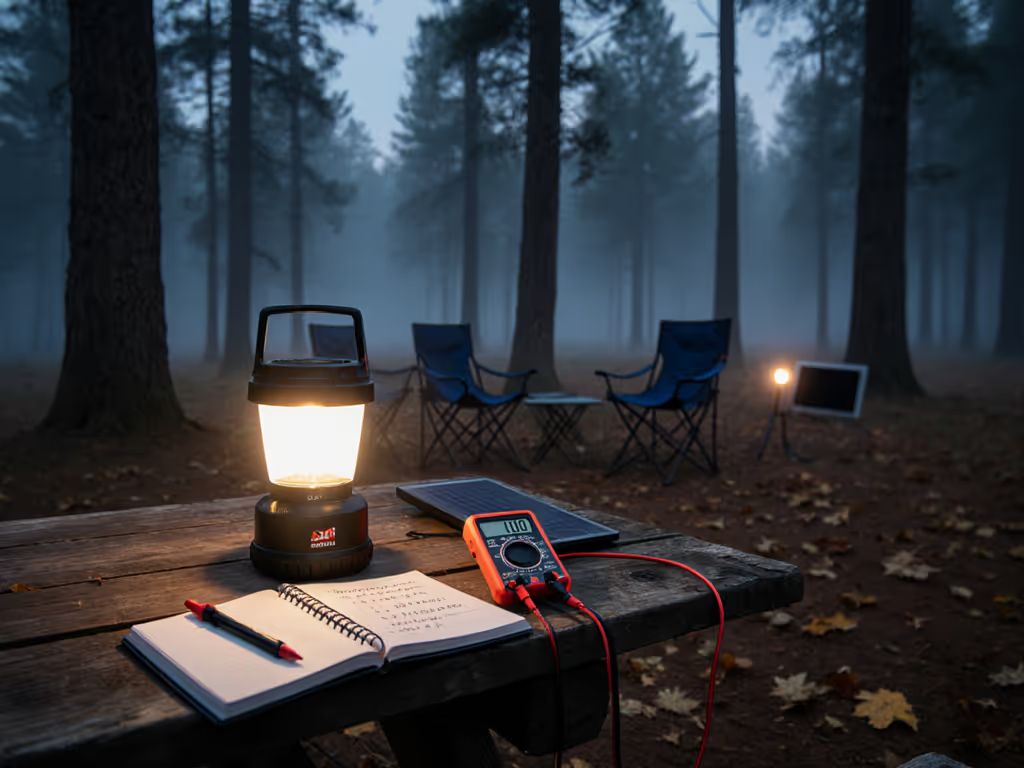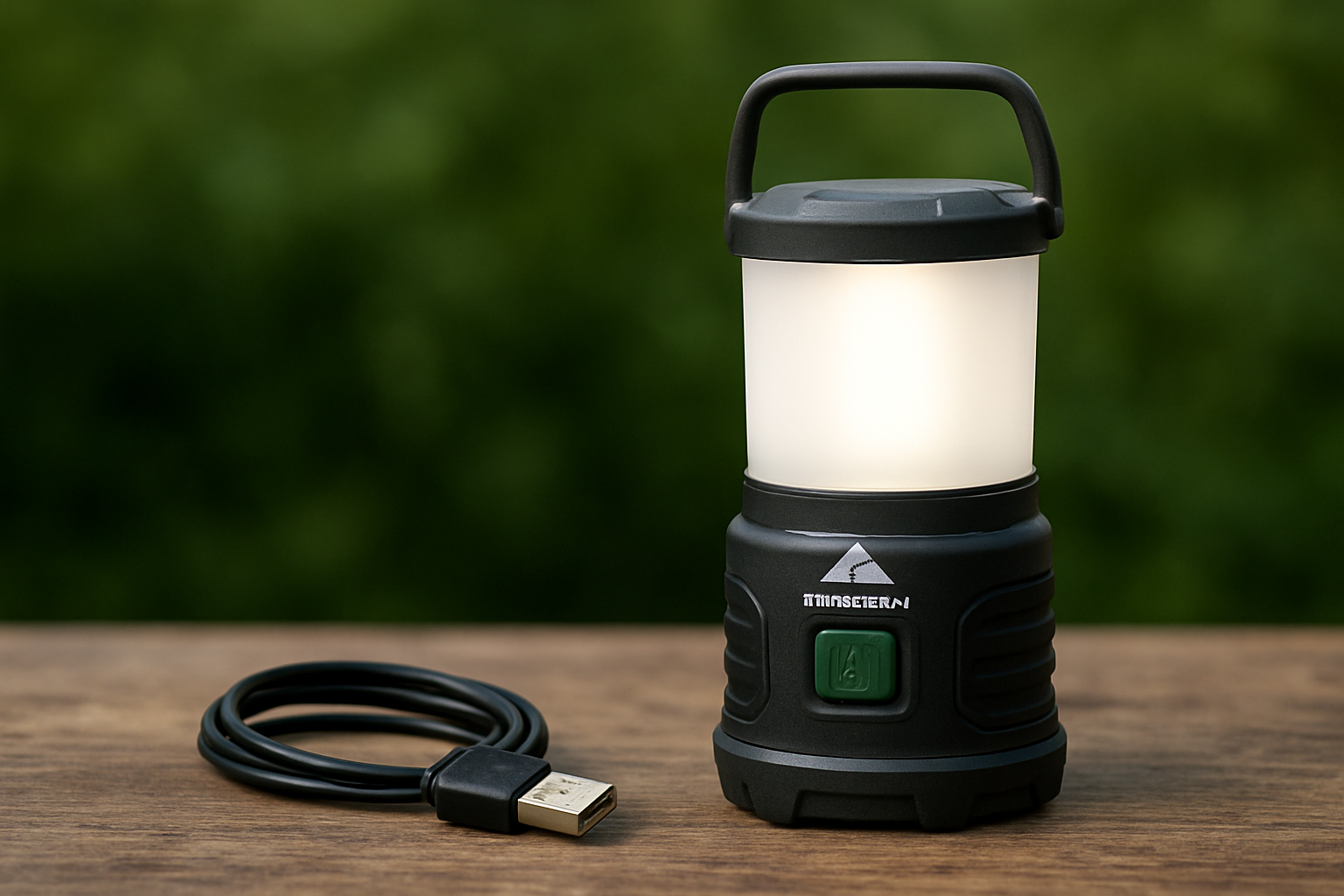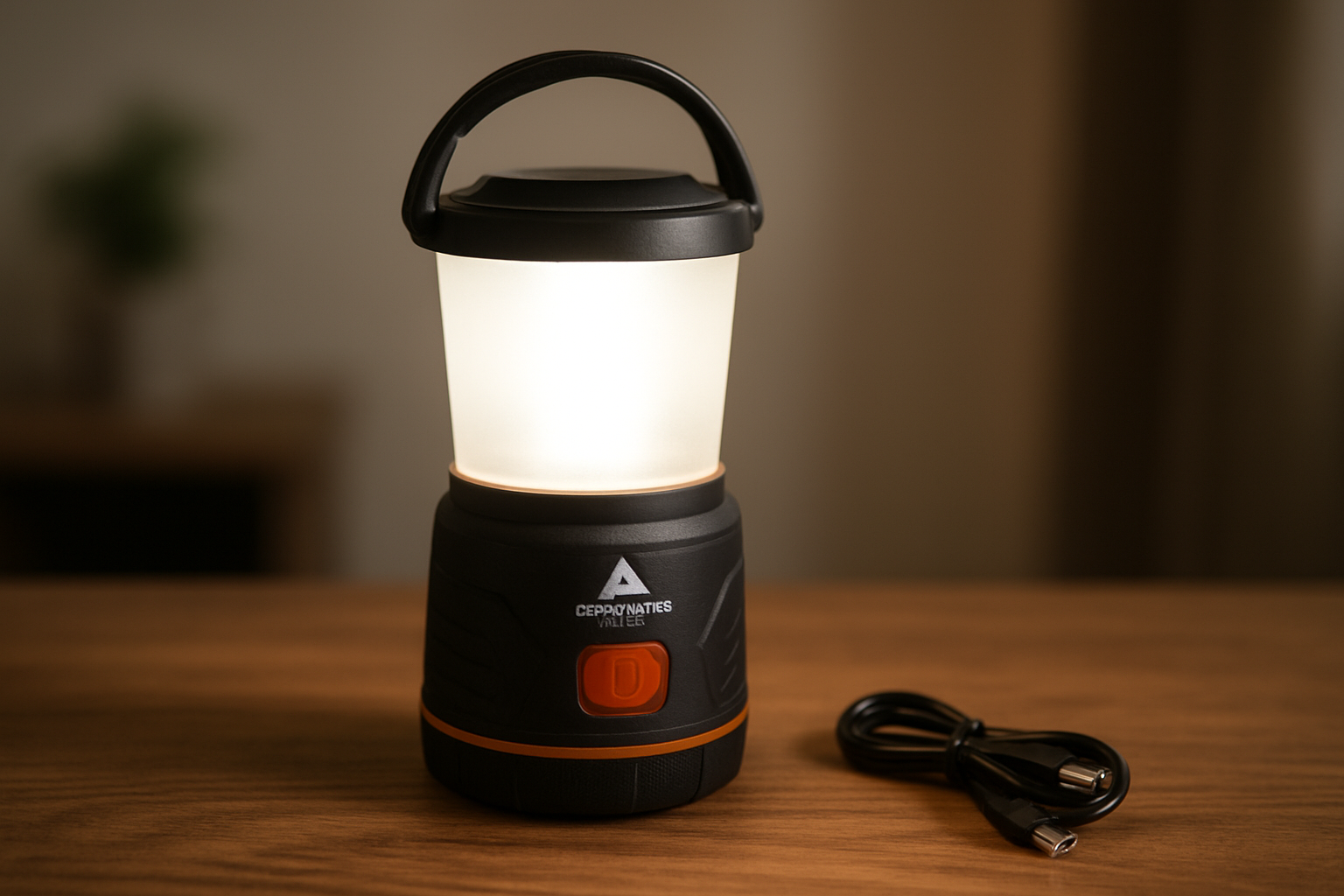Ozark Trail Rechargeable Lantern 700 Lumens Review: Is It the Ultimate Eco-Friendly Camp Light?

You want a camp lantern that is bright, efficient, and kind to the night sky, but you do not want to waste batteries or blind your trail mates. In this ozark trail rechargeable lantern 700 lumens review, we examine expected real-world performance, energy use, and design choices that matter outdoors. Rather than chasing specs alone, we evaluate how a 700-lumen lantern typically performs around tents, picnic tables, and group sites. Along the way, we weave in dark-sky-friendly guidance and sustainability insights from Camp Crew Lighting's reviews and guides so you can light camp smart without washing out the stars.
Ozark Trail Rechargeable Lantern 700 Lumens Review: What Stands Out
At first glance, a 700-lumen rating promises enough light for a four-person picnic table, a family tent, or a small cooking setup. What sets this class of lantern apart is the move to an internal rechargeable pack, which cuts down on single-use alkaline waste and the recurring cost of replacement batteries. Many models offer a straightforward interface, multiple brightness levels, and a diffused dome that spreads light evenly to reduce harsh shadows. For many campers, that balance of output and simplicity is the sweet spot: bright when you need it, gentle when you do not, and far more convenient to top up from a portable power bank between hikes.
Build-wise, the casing typically emphasizes impact resistance and a stable base so it does not topple easily on a camp table. A carry handle makes it simple to hang from a ridgeline or branch, and diffusion helps mitigate glare at eye level. If you care about light quality, some versions in this category lean toward neutral color temperatures that render food and map details more naturally. While the lantern’s 700-lumen ceiling is impressive, the lower modes are the unsung heroes, preserving night vision and stretching runtime far beyond what most people expect from a compact rechargeable camp light.
| Attribute | What to Expect in This 700-Lumen Class |
|---|---|
| Max Output | 700 lumens for area lighting around tables, tents, and small cook stations |
| Light Source | LED (light-emitting diode) array with diffused globe for wide, soft illumination |
| Charging | Many models recharge via USB-C or a similar cable, commonly from a power bank or vehicle port |
| Durability | Manufacturers often advertise impact-resistant housings and weather-ready seals suitable for typical camp conditions |
| Mounting | Top handle or bail for hanging; flat base for stable tabletop use |
Brightness, Runtime, and Beam Quality in the Field
Light output is only half the story; what matters at camp is beam quality and how long that output lasts. A well-diffused lantern spreads 700 lumens without creating a harsh hotspot, letting people face each other without squinting. Many campers prefer using medium or low modes for most tasks because these levels maintain comfortable, warm visibility with less glare. Lower modes also use less energy per hour, which can translate into multi-evening performance when matched with a modest charging routine during daylight or while driving between trailheads. For help deciding when adjustable brightness is worth it, see our dimmable vs non-dimmable guide.
Runtime varies with temperature, brightness level, and battery age, but patterns are predictable for this output range. High mode is best reserved for setup, safety checks, or cooking bursts, while medium and low cover dinner, games, and late-night winding down. If you are curious about color quality, a lantern with a better CRI (color rendering index) makes food look more appetizing and improves map readability, though this may trade slightly against peak efficiency. In short, a 700-lumen ceiling is more than enough for typical sites; with mindful mode selection, you get a more pleasant atmosphere and a longer-lasting charge in real-world use.
| Mode | Best Use | Estimated Runtime Range |
|---|---|---|
| High (near 700 lumens) | Camp setup, safety checks, short tasks requiring maximum visibility | Approximately 2 to 4 hours, depending on temperature and battery condition |
| Medium | Meals, games, socializing without glare | Approximately 6 to 12 hours with mindful use |
| Low | Night reading, tent lighting, quiet-hour ambiance | Approximately 15 to 30 hours for extended stays |
Rechargeability and Sustainability: Is It Truly Eco-Friendly?

Rechargeable lanterns reduce the number of disposable batteries heading to landfills, a subtle but meaningful improvement when multiplied across millions of camping trips each year. Industry estimates suggest billions of alkaline cells are sold annually, and even when recycled, their transport and processing carry a footprint. By contrast, topping up a lantern from a small solar panel, a vehicle outlet, or a power bank channels energy you already carry, creating a light loop that is efficient and less wasteful. To go deeper on minimizing light pollution and waste at camp, read our eco-friendly camping lights guide. In our evaluations of this category, the convenience of plugging in between activities encourages responsible brightness choices and less time spent on the least efficient modes.
Eco-friendliness is more than chemistry; it is also how you use the lantern. Diffused light at lower levels preserves your night vision and prevents over-lighting that spills beyond your site. Shielding the dome with a shade or positioning the lantern below eye level limits skyglow and respects neighbors during quiet hours. Combine those habits with careful charging - topping up when it is sunny or when the engine is already running - and the sustainability profile improves further. The result is a practical blend of performance and restraint, with energy saved and stars more visible above your campfire ring.
- Use solar or vehicle charging whenever possible to minimize grid dependence at camp.
- Prefer medium and low modes to reduce energy draw and skyglow.
- Shade the lantern or hang it lower to keep light on your site, not in the trees.
- Store at partial charge during off-season to maintain battery health.
- Recycle old gear responsibly; donate working lanterns to community groups.
Dark-Sky-Friendly Setup and Use: Practical Tips from Camp Crew Lighting
Camp Crew Lighting was founded on a simple idea: better camp lighting should preserve your night vision, your battery, and the darkness you came to enjoy. Traditional camping lights often apply brute force brightness, which creates glare, flattens depth perception, and washes out the Milky Way. A 700-lumen lantern can be part of a dark-sky-friendly kit if you pair it with smart placement and sensible settings. Whether you are building a solo backpacking layout or equipping a basecamp for friends, a few small tweaks transform any lantern into a neighborly beacon instead of a floodlight.
Here is a quick setup flow that we outline in our how-to guides. Think of it like a lighting “triangle”: one lantern, one task light, and ambient path markers, each tuned to only as much light as needed. This arrangement allows your main lantern to run comfortably on medium or low while task lighting handles close-up chores at even lower levels. The result is less glare, longer battery life, and a calmer, more natural scene that keeps the sky dark and your campsite inviting.
- Place the lantern chest-high or lower and slightly off-center from faces to cut direct glare.
- Angle a simple shade or fabric scrim toward the table to direct light where you need it.
- Run on medium for meal prep, then drop to low for conversation and stargazing.
- Add tiny marker lights at ankle height to define paths without bright spill.
- Switch off unneeded lights before quiet hours to protect night ecology and sleep.
Value and Alternatives: How the 700-Lumen Category Compares
For many shoppers, the question is less about raw brightness and more about the mix of runtime, durability, and price. The 700-lumen bracket balances those factors well, offering genuine usability without entering the cost or complexity of higher-end, modular systems. If you camp a handful of weekends per year, a reliable 700-lumen rechargeable lantern can cover almost everything you need. If you frequently host larger groups or run off-grid for a week or more, you may want a second lantern or a modular setup that supports swappable batteries and accessory shades.
Camp Crew Lighting evaluates lanterns across multiple categories: output per dollar, glare control, dark-sky friendliness, energy efficiency, and ease of maintenance. Our evaluations consider how the light interacts with tents of various fabrics, how it mounts in different campsites, and how it performs in wind or drizzle. We also score on “neighborliness,” because the best camps create warmth within their boundary without painting nearby trees in white. Below is a broad comparison matrix to help position a 700-lumen rechargeable lantern alongside other common choices, so you can select the right tool for your style, budget, and environment.
| Category | 700-Lumen Rechargeable | Midrange Rechargeable (500-700) | Premium Modular (500-1000) |
|---|---|---|---|
| Brightness Coverage | Campsites up to 4-6 people | Small to mid campsites | Scalable for larger groups |
| Glare Control | Good with diffuser and shade | Good to very good | Excellent with accessories |
| Runtime Flexibility | Strong on medium and low | Strong; similar class | Best with swappable packs |
| Durability | Camp-ready, weather aware | Camp-ready, some upgrades | Rugged with premium seals |
| Price-to-Performance | Excellent value | Good value | High cost, highest flexibility |
Setup, Care, and Real-World Tweaks for Better Results

Getting the most from a 700-lumen lantern is about thoughtful placement and care, not just watt-hours. Try hanging the lantern slightly off-axis from your central seating so people see the glow, not the source. If your model supports it, a quick shade made from a lightweight, opaque cup or cloth sends more light onto the table and less into eyes. Small lifts - placing the lantern on a pot or stuff sack - change the beam geometry and reduce glare while keeping cards, utensils, and journals brightly lit.
Battery health and charging habits also matter. Top off during natural downtimes: at breakfast, during a scenic drive, or when sunshine is abundant on a small panel. Keep vents clear and avoid charging under a sleeping bag or jacket, which can trap heat. Consider labeling your brightness “defaults” with a piece of tape, noting preferred levels for meals, reading, and night wind-down. These simple rituals, recommended by Camp Crew Lighting in our how-to guides and content, make your lantern feel tailored to your camp, not just a bright object in the middle of it.
- Hang lower than eye level to reduce direct glare.
- Shade or bounce light off a light-colored surface for softer illumination.
- Use medium mode for tasks, low mode for ambiance and quiet hours.
- Charge when other systems are already running to conserve energy.
- Wipe dust and moisture after trips to preserve seals and contacts.
Who Should Choose a 700-Lumen Rechargeable Lantern?
Not every camper needs the same lighting footprint, and that is the point of a thoughtful review. A 700-lumen rechargeable lantern is tailor-made for family campsites, festival tents, and group dinners where wide, even light matters. It shines for car campers and basecamp hikers who want plug-in convenience, predictable runtime on mid modes, and a form factor that plays nicely with picnic tables and tent loops. If you often share gear with friends, the intuitive controls in this class reduce the learning curve and help everyone settle into a comfortable glow.
On the other hand, ultralight backpackers and night photographers may prefer smaller, dimmer, more controllable lights that do not attract bugs or compromise long exposures. Backpackers prioritizing grams over glare should compare ultralight lighting options. Remote expedition groups might benefit from modular systems with swappable packs and accessories tailored to mission-specific tasks. That said, many campers keep a 700-lumen lantern as a communal hub while layering in headlamps and small task lights. When viewed as the heart of a simple, dark-sky-friendly lighting plan, this lantern occupies a smart middle ground: friendly, efficient, and adaptable across seasons and sites.
Where Camp Crew Lighting Fits In
Camp Crew Lighting exists to solve problems that standard lanterns can create - washed-out night vision, wasted battery power, and unnecessary glare spilling into the trees. Our team provides complete, dark-sky-friendly lighting system designs and guidance that put light only where you need it, using settings and shades that reduce eye strain and preserve the night environment. We publish comprehensive reviews of camping lighting products and head-to-head feature evaluations to help you see how a lantern performs beyond a spec sheet. We also deliver curated recommendations by budget, activity, and group size, so you get a solution - not just a product link.
If you are weighing this 700-lumen category, our how-to guides on setup and maintenance show you how to protect seals, maximize runtime, and tune color temperature for comfort. Practical checklists help you dial in campsite layouts, and our dark-sky tips reduce glare while extending battery life across multi-day trips. Traditional camping lights can disrupt night vision and harm the dark-sky balance, but thoughtful gear and smarter use change the equation. With the right plan, you can savor your campsite in a warm, even glow while the stars remain bright overhead.
So, is this lantern the ultimate eco-friendly camp light? It is a compelling value if you want rechargeable convenience, comfortable diffusion, and enough headroom for real tasks. When paired with dark-sky-friendly techniques, it becomes even better - more neighborly, more efficient, and easier on the eyes. If you are researching models, use this ozark trail rechargeable lantern 700 lumens review as a blueprint for comparing brightness, battery strategy, and glare control before you buy.
Imagine a season where every campsite is warmly lit yet the constellations feel close enough to touch. In the next 12 months, expect more lanterns to prioritize diffusion, lower power modes, and smarter charging that aligns with how you actually camp. What small change will you make tonight - placement, brightness, or habit - to get the most from your light and the most from the sky?
Additional Resources
Explore these authoritative resources to dive deeper into ozark trail rechargeable lantern 700 lumens review.
- Ozark Trails 700 Lumen Rechargable Lantern Review - YouTube
- Review of Walmart Ozark Trail Rechargeable Work Light : r/flashlight
Deepen Your Ozark Trail Rechargeable Lantern 700 Lumens Review with Camp Crew Lighting
Comprehensive reviews of camping lighting products that preserve the night environment, reduce glare, extend battery life, and elevate trips for campers, outdoor enthusiasts, and festival-goers in solo or group setups.
